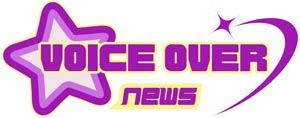In eLearning production, voiceover isn’t just a matter of sounding good — it’s a matter of being effective. For voice actors working in this field, success depends on how well you align with the expectations of instructional designers, project managers, and learning and development (L&D) professionals. These clients are focused on outcomes: learner engagement, knowledge retention, accessibility, and efficient course deployment.
While performance quality remains essential, voiceover in eLearning is governed by a distinct set of standards. These are not always communicated clearly, especially to voice actors who are new to the genre or transitioning from commercial or character-driven work. Understanding the expectations of your clients — from how you read a script to how you deliver files — can make the difference between a one-off job and a long-term working relationship.
Voiceover’s Role in the Learning Experience
Unlike advertising or entertainment, eLearning voiceover is an instructional tool. The narration is not there to entertain or sell — it’s there to support comprehension and guide the learner through often complex material. Whether the module covers corporate compliance, medical procedures, or customer service skills, the voiceover should blend seamlessly into the experience.
Clients expect narration to reflect the learning objectives of the course. This may mean adopting a neutral, steady tone that doesn’t distract, or a warmer, more conversational approach for softer skills training. Either way, the goal is to enhance understanding, not draw attention to the performance.
Clarity and Consistency Are Non-Negotiable
Accuracy is one of the most important expectations in eLearning voiceover. Unlike improvisational projects, eLearning demands strict adherence to the script. This is because the narration is typically synchronized with on-screen elements such as animations, captions, or interactive buttons. A single word deviation can throw off alignment or confuse learners.
Terminology also matters. Many eLearning courses include technical, scientific, or industry-specific language. Mispronouncing a term or altering phrasing — even slightly — can erode the credibility of the course. Instructional designers will often provide pronunciation guides or reference documents. Following them carefully is part of delivering a professional product.
Deliverables Matter as Much as Delivery
Even if your read is flawless, your job isn’t complete until your files are delivered correctly — and this is where many voice actors fall short in the eyes of eLearning clients.
Standard expectations for deliverables typically include:
-
Clean, edited audio with consistent volume and tone
-
Correct file formats (usually WAV or MP3 at 44.1kHz mono)
-
File naming that matches script sections or storyboard IDs
-
Separation of files based on slide or scene structure
This is not just about organization — it’s about production efficiency. Instructional designers often work with authoring tools like Articulate Storyline or Adobe Captivate, where voiceover files must be imported and synced manually. Poorly labeled or inconsistent files can cost the client valuable time.
Communication Is Part of Your Value
eLearning projects often involve multiple rounds of review. Changes in the script, adjustments to pacing, or feedback from a training lead are all common. Voice actors who respond quickly, deliver updates without resistance, and stay organized earn a reputation as reliable partners.
This also extends to how you handle pickups. Many clients will expect you to be available for revisions, sometimes weeks after the initial delivery. Clarifying your policy on pickups and being transparent about turnaround times helps build trust and ensures smoother collaboration.
Performance Expectations Are Subtle But Specific
The right tone can vary widely depending on the nature of the course. A compliance training module may call for a serious, neutral voice to emphasize importance, while a soft-skills module may benefit from a relaxed, empathetic tone. However, in both cases, the performance should remain controlled and consistent.
Overly dramatic or stylized reads — while effective in commercial or animation work — are rarely appropriate. Clients expect voiceover that supports learning objectives without overshadowing them. The narration should invite attention without demanding it.
Pacing is also a frequent point of feedback. eLearning narration should be slow enough to allow for comprehension but not so slow that it becomes tedious. Most clients are not voiceover professionals, but they know when something “feels too fast” or “drags.” Being able to interpret that kind of feedback and adjust accordingly is part of the job.
Timelines Are Tight, and Expectations Are High
eLearning courses are often developed under strict timelines, especially in corporate environments where training delivery is tied to compliance deadlines or new product rollouts. Voiceover usually comes late in the process, after scripts have been finalized and design work is already underway. That means turnaround expectations can be tight.
Being ready to deliver quickly — and cleanly — is a competitive advantage. Clients may not explicitly ask about your workflow, but they absolutely notice when you meet deadlines without drama, return revisions quickly, and don’t require extensive audio cleanup.
Understanding the Client Perspective
One of the best ways to align with eLearning clients is to understand their workflow. Instructional designers often juggle multiple stakeholders, including subject matter experts (SMEs), department heads, and HR teams. Their time is limited, and their goals are often instructional rather than creative.
When voice actors understand that context, they approach projects with more empathy — and that leads to stronger relationships. A voice actor who can communicate clearly, deliver on spec, and anticipate client needs will be invited back again and again.
Voiceover in eLearning is not about flair — it’s about function. It’s about clarity, timing, and professionalism. Understanding what clients truly expect allows voice actors to provide more than a voice — it allows them to become a dependable part of the learning development process. And in an industry where trust and timelines are everything, that’s what keeps work coming in.

